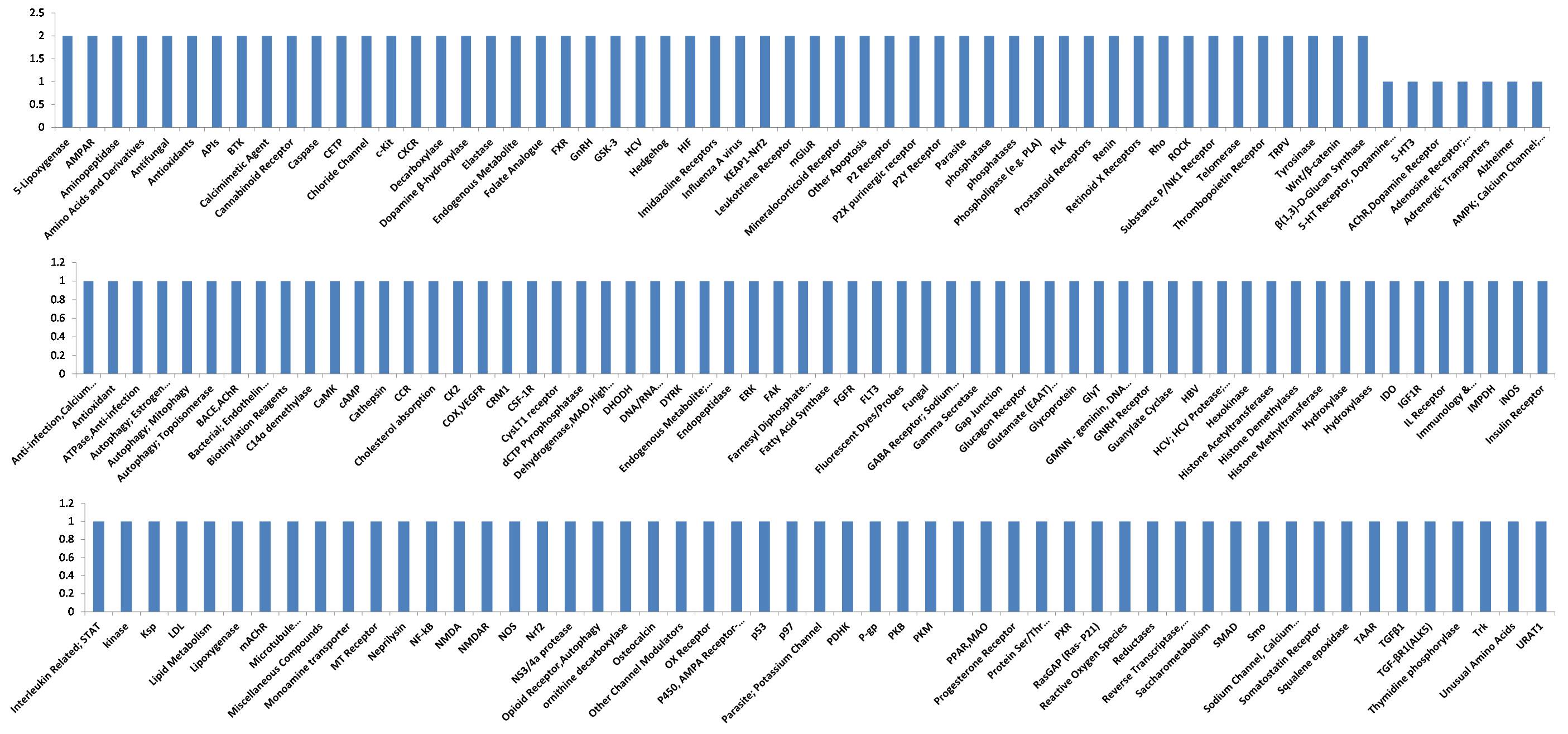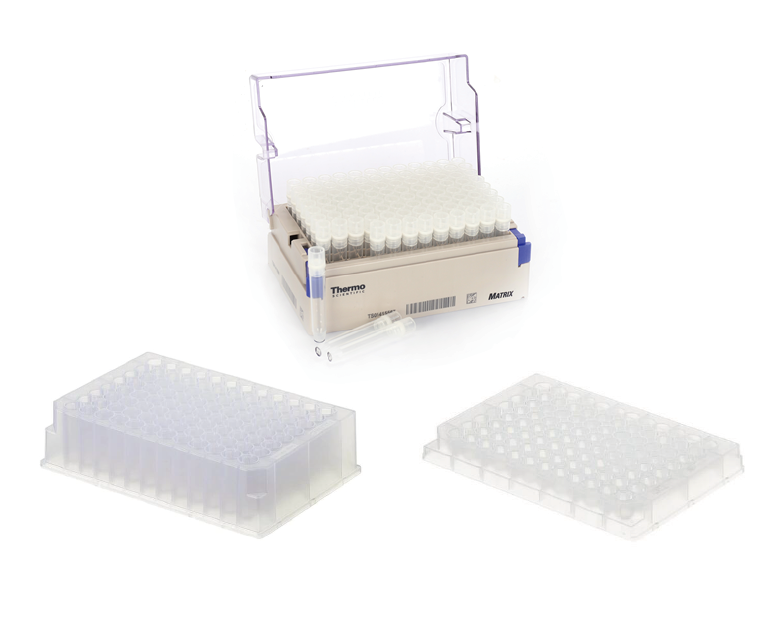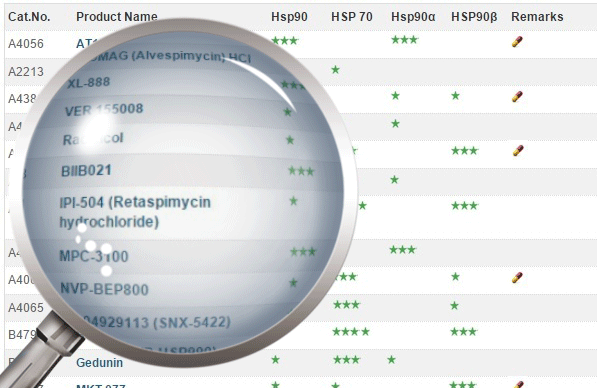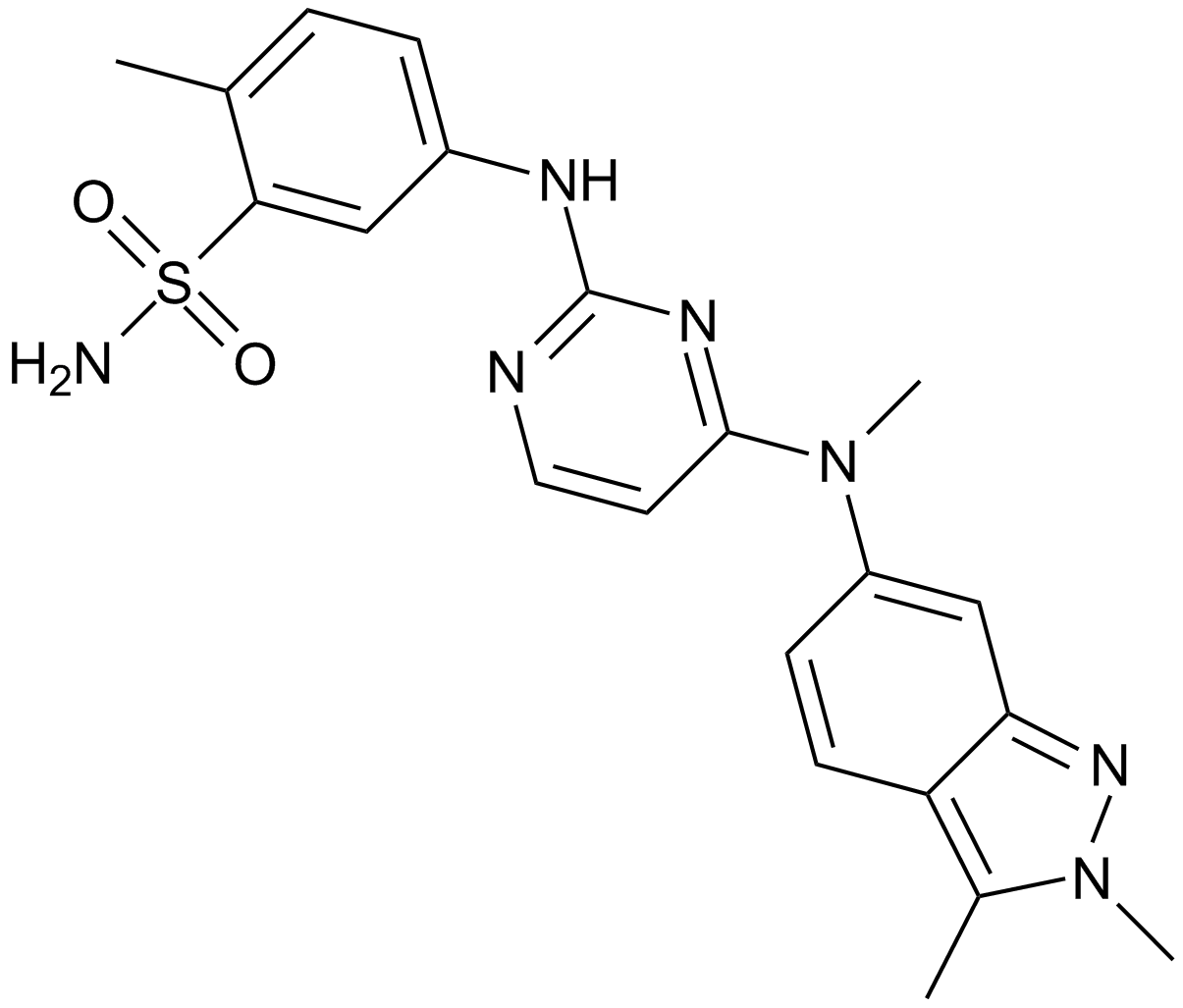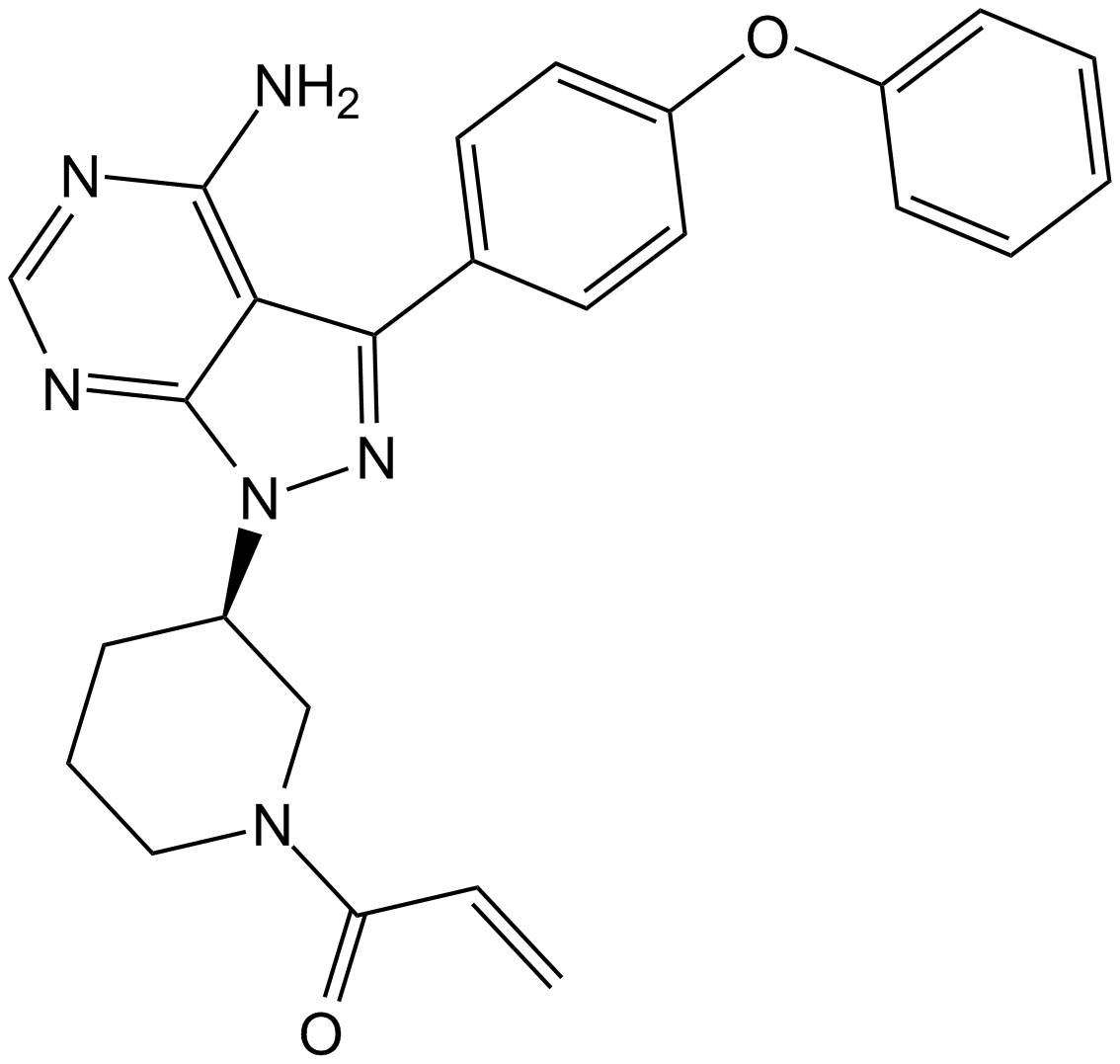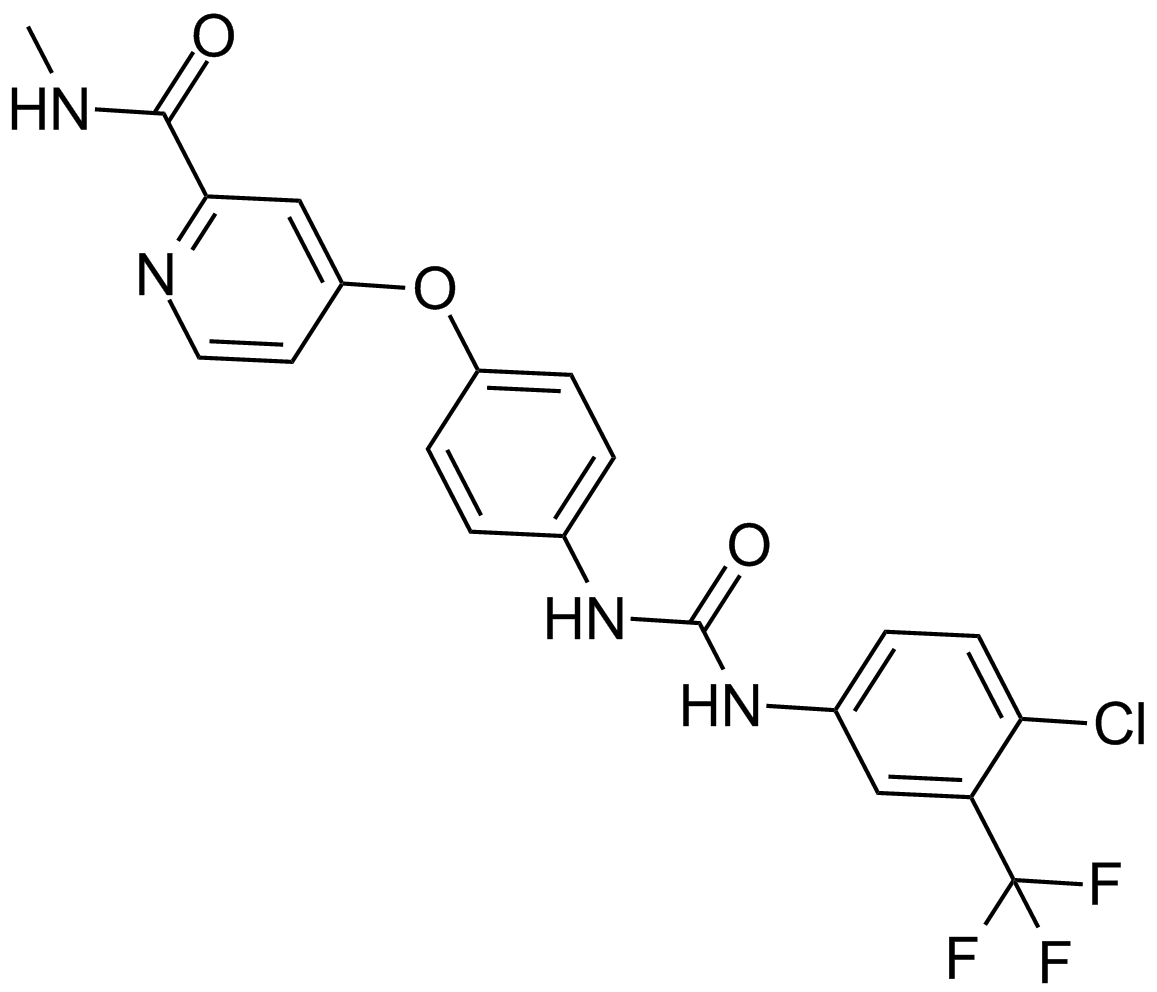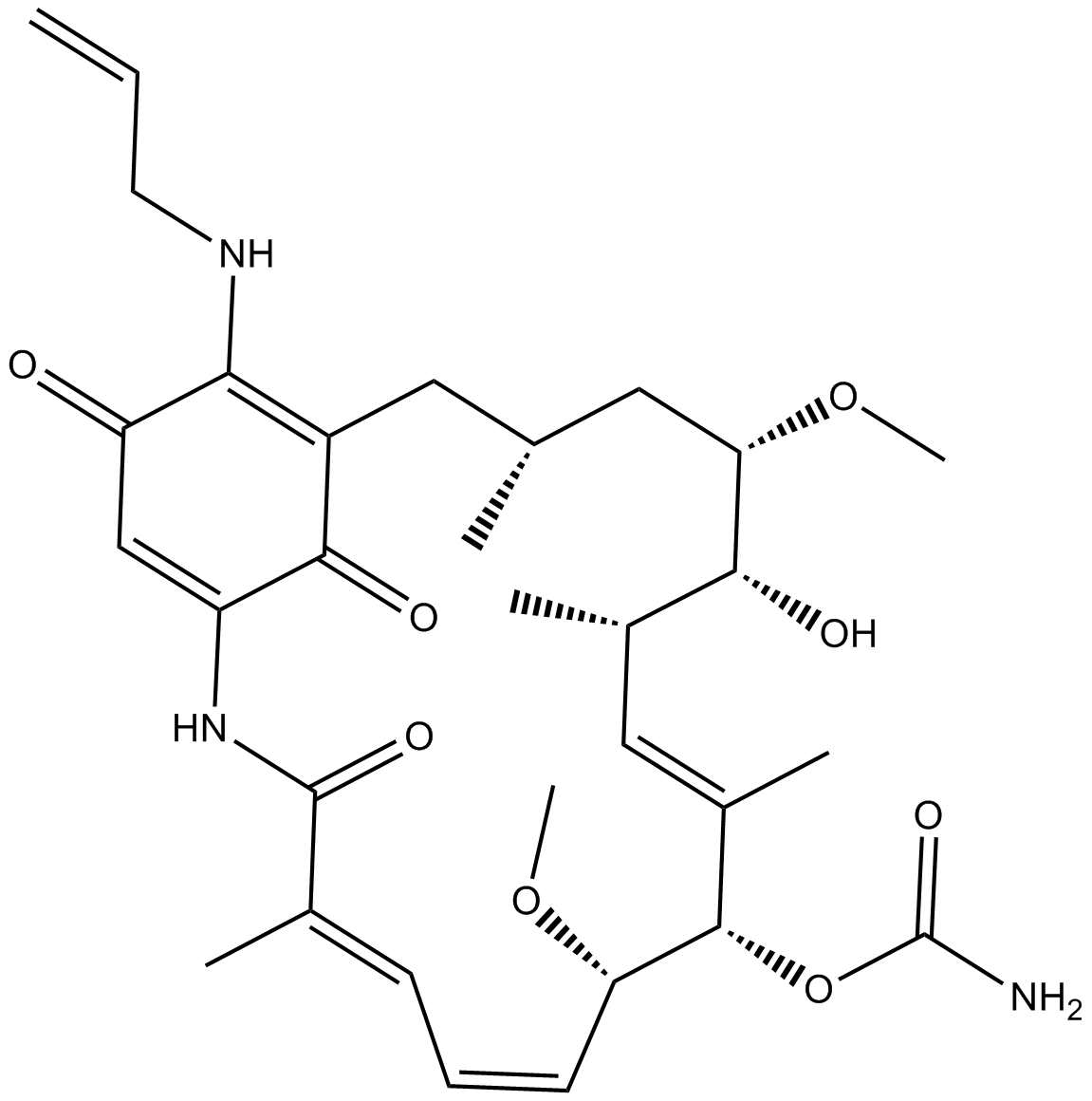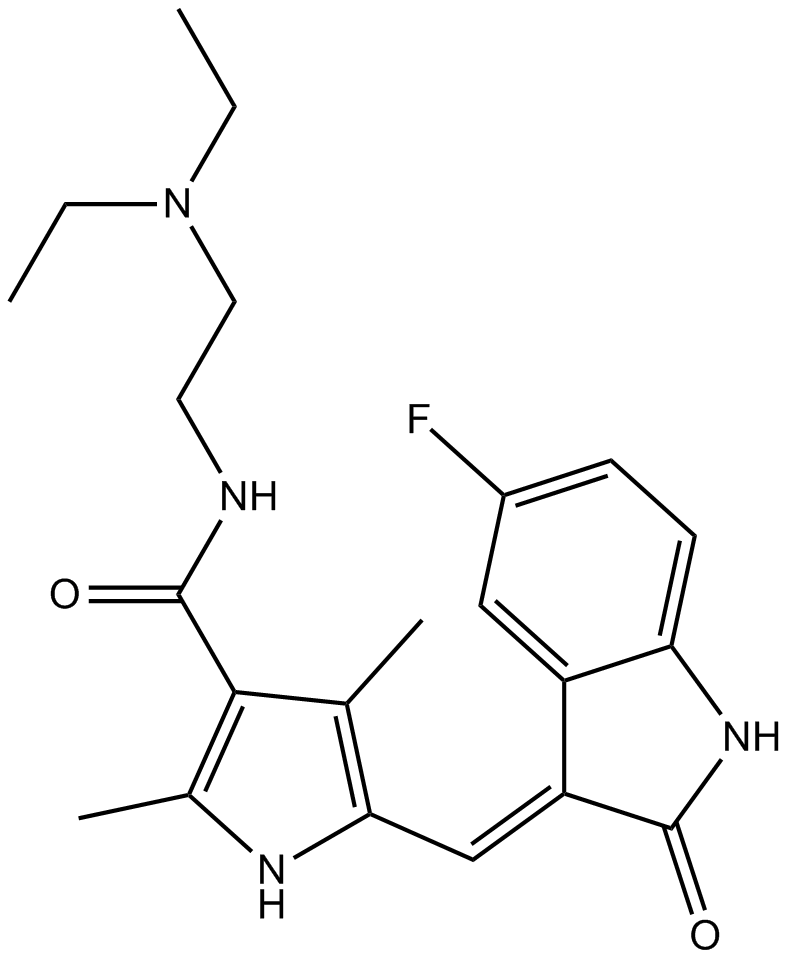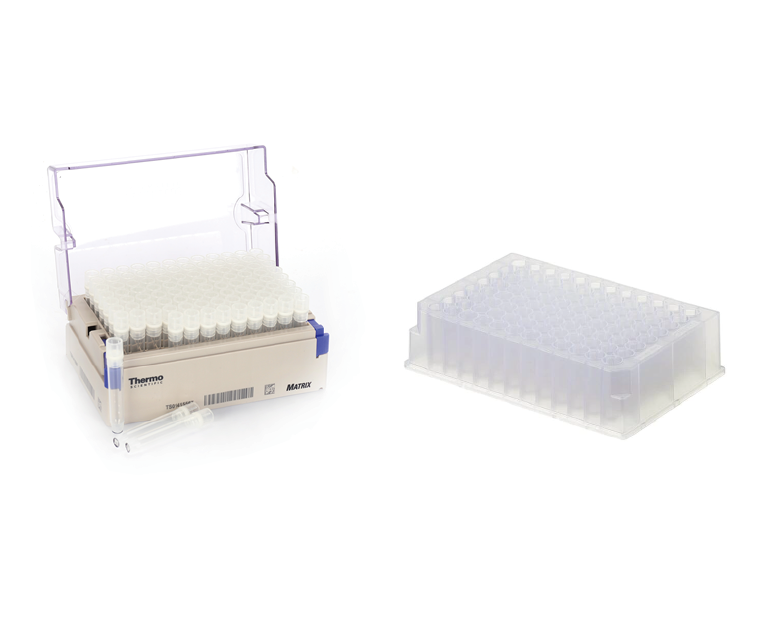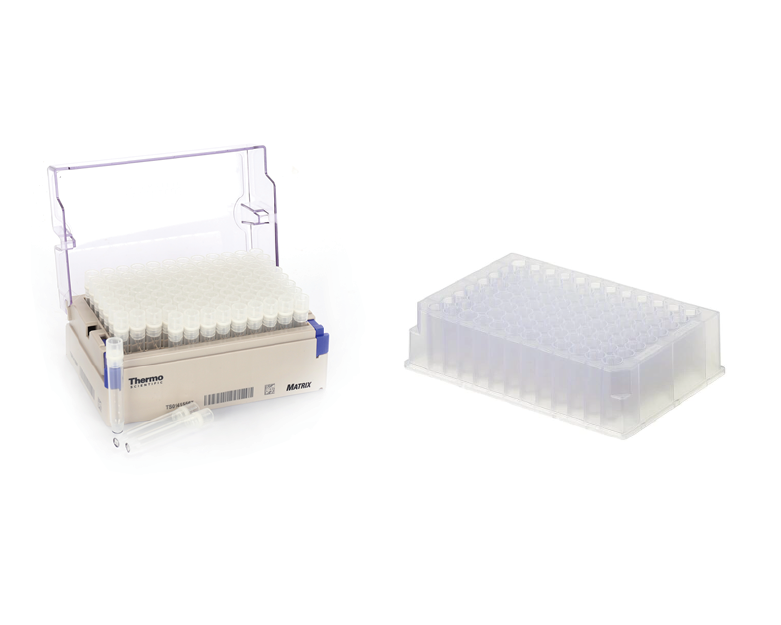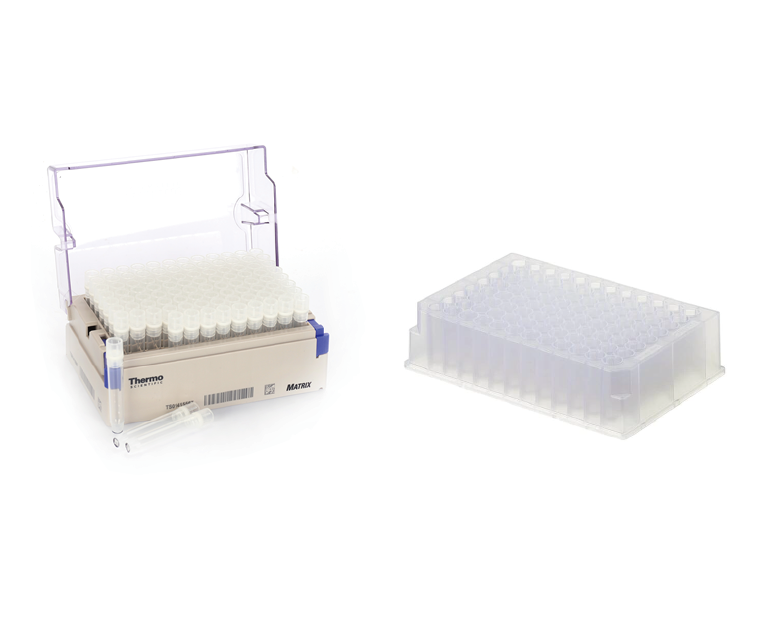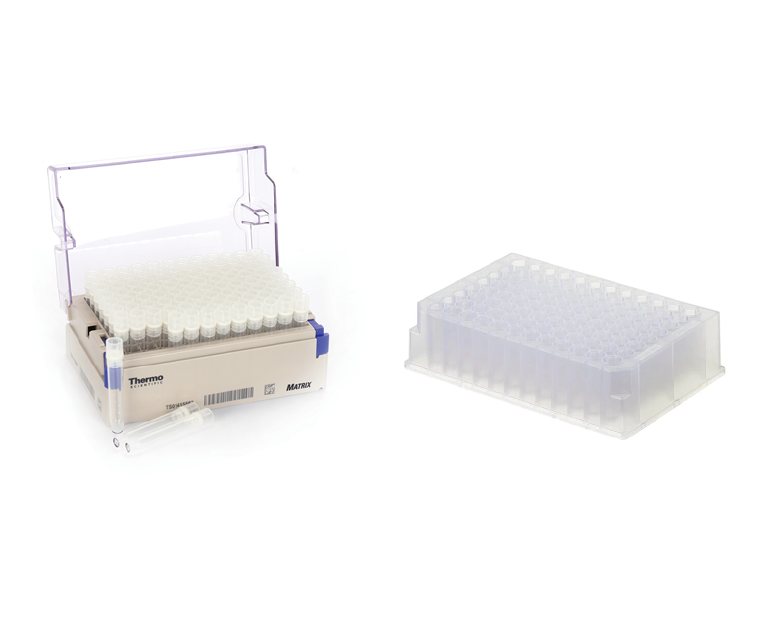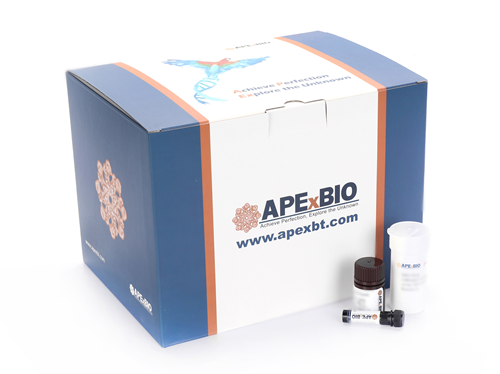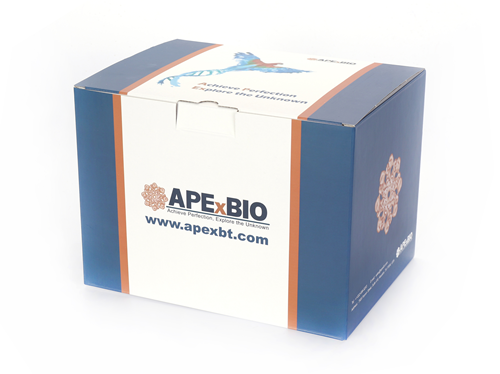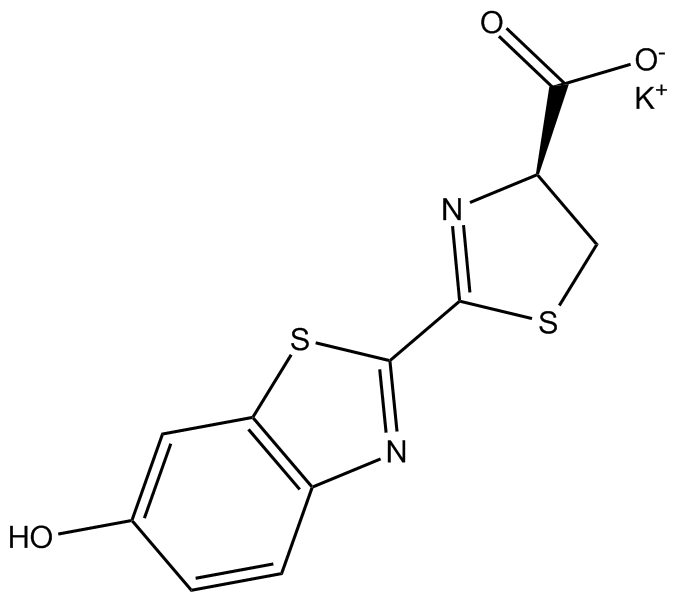DiscoveryProbe™ FDA-approved Drug Library
The DiscoveryProbe™ FDA-approved Drug Library consists of 2,320 bioactive compounds that have been clinically approved by regulatory agencies such as FDA, EMA, HMA, CFDA, and PMDA, or listed in recognized pharmacopeias. These pharmaceutical compounds cover a broad spectrum of well-characterized mechanisms of actions, including receptor agonists and antagonists, enzyme inhibitors, ion channel modulators, and signal pathway regulators. Representative agents include well-studied clinical drugs such as doxorubicin, metformin, and atorvastatin. Due to their widely validated pharmacological activities and established safety data, these compounds serve as a valuable resource for high-throughput (HTS) and high-content screening (HCS), drug repositioning efforts, and identification of novel therapeutic targets across biomedical research fields.
- 1. Alejo Antonio Morales, Vladimir Camarena, et al. "Glucocorticoid treatment rescues early lethality in a mouse model of geleophysic dysplasia." Commun Biol. 2025 Nov 26;8(1):1707. PMID: 41298911
- 2. Cheng Yu, Jinyu Liu, Hejia Jian. "ChaC1-based drug screenings identify a synergistic lethal effect of auranofin and proteasome inhibitors in hepatocellular carcinoma cells." Cell Death Discov. 2025 Nov 17;11(1):532. PMID: 41249117
- 3. Sien Lequeue, Hind Allach, Ine Nulmans. "A robust bacterial high-throughput screening assay to identify pharmacological chaperones targeting human homogentisate 1,2-dioxygenase missense variants in alkaptonuria." Eur J Pharmacol. 2025 Aug 8:178048. PMID: 40784658
- 4. Maria Petrosino, Karim Zuhra, et al. "Givinostat rescues folding of cystathionine beta-synthase and ameliorates murine homocystinuria." Biochem Pharmacol. 2025 Sep:239:117079. PMID: 40571220
- 5. Annika Ullrich, Johannes Schneider, et al. "Discovery of a functionally selective serotonin receptor (5-HT." Sci Adv.2025 Jun 20;11(25):eadv9267. PMID: 40531992
- 6. Yan Guo, Yong Zhang, et al. "Caffeic acid phenethyl ester protects." Elife. 2025 Jun 11:13:RP101757. PMID: 40497553
- 7. Jingheng Wang, Stanley Nithianantham, et al. "Decoding the selective chemical modulation of CYP3A4." Nat Commun. 2025 Apr 10;16(1):3423. PMID: 40210880
- 8. Minda Liu, Tianqi Fang, et al. "Repurposing tavaborole to combat resistant bacterial infections through competitive inhibition of KPC-2 and metabolic disruption." Bioorg Chem. 2025 Jun 1:159:108421. PMID: 40179579
- 9. Jaewon Song, Li Zhang, et al. "Norovirus co-opts NINJ1 for selective protein secretion." Sci Adv. 2025 Feb 28;11(9):eadu7985. PMID: 40020060
- 10. Wei Yang, Ying Xu, et al. "Mebendazole induces ZBP-1 mediated PANoptosis of acute myeloid leukemia cells by targeting TUBA1A and exerts antileukemia effect." J Adv Res.2025 Feb12:S2090-1232(25)00111-0. PMID: 39952321
- 11. Meehee Park, Seungju Cho, et al. "Therapeutic potential of sulfasalazine for sarcopenia: Insights from mouse models and clinical data." Experimental Gerontology Available online 1 September 2025, 112883
- 12. Seigo Terawaki, Filipp Vasilev, et al. "Triclabendazole suppresses cellular glycosaminoglycan levels – a potential therapeutic agent for mucopolysaccharidoses and related diseases." Cell Symposia Volume 28, Issue 8113118 August 15, 2025
- 13. Nikolina Radulovich;Pamela P. Soberanis, Molly Udaskin, et al. "Advancing precision cancer medicine with patient-derived organoids: an endometrial cancer case study." Cancer Res (2025) 85 (8_Supplement_1): 3997
- 14. Chenyu Yao, Peter Hart, Syed Sarfaraz. "Abstract 2138 Regulation of olaparib resistance in ovarian cancer using serotonin receptor modulators." Drug discovery and pharmacology Volume 301, Issue 5, Supplement 109058May 2025
- 15. Ming Wei. "Identification of Novel Paclitaxel Sensitizers for Glioblastoma Therapy through High-Throughput Screening." International Journal of Frontiers in Medicine. ISSN 2706-6819 Vol.7, Issue 4: 74-84
- 16. Fraser Hughes, Alex Cookson, et al. "HTS Library Plate Rejuvenation Using a DMSO-Rich Atmosphere." SLAS Technol. 2024 Oct 11:100204. PMID: 39396728
- 17. Sunniva Sigurdardóttir, Suélen Fernandes Silva, et al. "An automated positive selection screen in yeast provides support for boron-containing compounds as inhibitors of SARS-CoV-2 main protease." Microbiol Spectr. 2024 Aug 20:e0124924. PMID: 39162260
- 18. Haiyan Dong, Chuangyu Wen, et al. "Nilotinib boosts the efficacy of anti-PDL1 therapy in colorectal cancer by restoring the expression of MHC-I." J Transl Med. 2024 Aug 14;22(1):769. PMID: 39143573
- 19. Canrong Li, Yuguo Yi, et al. "TORSEL, a 4EBP1-based mTORC1 live-cell sensor, reveals nutrient-sensing targeting by histone deacetylase inhibitors." Cell Biosci. 2024 Jun 1;14(1):68. PMID: 38824577
- 20. Yubao Fan, Shanshan Huang, et al. "The adipose-neural axis is involved in epicardial adipose tissue-related cardiac arrhythmias." Cell Rep Med. 2024 May 21;5(5):101559. PMID: 38744275
- 21. Yuting Pan, Ying Xuan, et al. "Time-dependent proteomics and drug response in expanding cancer cells." Pharmacol Res. 2024 Jun:204:107208. PMID: 38729587
- 22. Xiaojuan Zhang, Quanbin Xu, et al. "Chandipura Viral Glycoprotein (CNV-G) Promotes Gectosome Generation and Enables Delivery of Intracellular Therapeutics." Mol Ther. 2024 May 3:S1525-0016(24)00298-3. PMID: 38702887
- 23. Xiaoyu Chen, Huilin Zhao, et al. "Two natural compounds as potential inhibitors against the Helicobacter pylori and Acinetobacter baumannii IspD enzymes." Int J Antimicrob Agents. 2024 May;63(5):107160. PMID: 38537721
- 24. Susmita Khamrui, Tetyana Dodatko, et al. "Characterization, structure and inhibition of the human succinyl-CoA:glutarate-CoA transferase, a genetic modifier of glutaric aciduria type 1." bioRxiv. 2024 Feb 7:2024.02.07.578422. PMID: 38370847
- 25. Lanqin Wu, et al. "Saracatinib inhibits necroptosis and ameliorates psoriatic inflammation by targeting MLKL." Cell Death Dis. 2024 Feb 8;15(2):122. PMID: 38331847
- 26. Soo Young Lee, et al. "5-aminosalicylic acid suppresses osteoarthritis through the OSCAR-PPARγ axis." Nat Commun. 2024 Feb 3;15(1):1024. PMID: 38310093
- 27. Yan Guo, Hongtao Liu, et al. "Novel metallo‐β‐lactamases inhibitors restore the susceptibility of carbapenems to New Delhi metallo‐lactamase‐1 (NDM‐1)‐harbouring bacteria." Br J Pharmacol. 2024 Jan;181(1):54-69. PMID: 37539785
- 28. Xiaodan Zhu, Shasha He, et al. "Protective Effect and Mechanism of Autophagy in Endothelial Cell Injury Induced by Hyperoxia." Am J Perinatol. 2024 May;41(S 01):e2365-e2375. PMID: 37516120
- 29. Yan Guo, Boyuan Liu, et al. "2′-O-Galloylhyperin Prevents Tissue Remodeling in Thyroid Eye Disease: Prospects as a Thyrotropin Receptor Antagonist." The Journal of Clinical Endocrinology & Metabolism 02 December 2024
- 30. Siyi He, Luis Delgadillo Silva, et al. "A high-throughput screening approach to discover potential colorectal cancer chemotherapeutics: Repurposing drugs to disrupt 14-3-3 protein-BAD interactions." bioRxiv [Preprint]. 2023 Dec 15:2023.12.14.571727. PMID: 38168191
- 31. Haya Albanna, Alesia Gjoni, et al. "Activation of Adrenoceptor Alpha-2 (ADRA2A) Promotes Chemosensitization to Carboplatin in Ovarian Cancer Cell Lines." Curr Issues Mol Biol. 2023 Nov 28;45(12):9566-9578. PMID: 38132444
- 32. Somaya A Abdel-Rahman, Katarzyna Świderek, et al. "First-in-class Small Molecule Inhibitors of ICOS/ICOSL interaction as a novel class of immunomodulators." RSC Med Chem. 2023 Aug 1;14(9):1767-1777. PMID: 37731692
- 33. Jie Zheng, Junjie Yang, et al. "CIL-ExPMRM: An Ultrasensitive Chemical Isotope Labeling Assisted Pseudo-MRM Platform to Accelerate Exposomic Suspect Screening." Environ Sci Technol. 2023 Aug 1;57(30):10962-10973. PMID: 37469223
- 34. Somaya A Abdel-Rahman, Ashfaq Ur Rehman, et al. "Discovery of First-in-Class Small Molecule Inhibitors of Lymphocyte Activation Gene 3 (LAG-3)." ACS Med Chem Lett. 2023 Apr 11;14(5):629-635. PMID: 37197466
- 35. Wei Yang, Xiongfei Sun, et al. "TLR8 agonist Motolimod-induced inflammatory death for treatment of acute myeloid leukemia." Biomed Pharmacother. 2023 Jul:163:114759. PMID: 37105077
- 36. Jingjing Zhang, Yingpei Jiang, et al. "Development of FRET and Stress Granule Dual-Based System to Screen for Viral 3C Protease Inhibitors." Molecules. 2023 Mar 28;28(7):3020. PMID: 37049786
- 37. Fabrizio Fierro, Lior Peri, et al. "Inhibiting a promiscuous GPCR: iterative discovery of bitter taste receptor ligands." Cell Mol Life Sci. 2023 Apr 3;80(4):114. PMID: 37012410
- 38. Zhiyu Song, Chenglong Zhao, et al. "Carbenoxolone disodium suppresses the migration of gastric cancer by targeting HDAC6." Future Med Chem. 2023 Feb;15(4):333-344. PMID: 36946221
- 39. Liuqing Chen, Meiting Chen, et al. "Ratiometric NAD+ Sensors Reveal Subcellular NAD+ Modulators." ACS Sens. 2023 Apr 28;8(4):1518-1528. PMID: 36931900
- 40. Jing Han, Shuiqing Hu, et al. "Discovery of podofilox as a potent cGAMP–STING signaling enhancer with antitumor activity." Cancer Immunol Res. 2023 May 3;11(5):583-599. PMID: 36921097
- 41. Beatrice Alexander-Howden, Li Zhang, et al. "A screen for MeCP2-TBL1 interaction inhibitors using a luminescence-based assay." Sci Rep. 2023 Mar 8;13(1):3868. PMID: 36890145
- 42. Annika Ullrich, Johannes Schneider, et al. "Discovery of a functionally selective serotonin 5-HT1A receptor agonist for the treatment of pain." bioRxiv. September 14, 2023
- 43. Min Zheng, Cheng Yu, et al. "ChaC1-based drug screenings identify a synergistic lethal effect of auranofin and proteasome inhibitors in hepatocellular carcinoma cells.." Research Square. 10 Aug, 2023
- 44. De-Ping Wang, Fang-Ying Jiang, et al. "Crystal structure of RNA helicase from Saint Louis encephalitis virus and discovery of its inhibitors." Genes Dis. 2022 Jul 31;10(2):389-392. PMID: 37223502
- 45. Eirini D Tseligka, Stéphanie Conzelmann, et al. "Identification of selective hepatitis delta virus ribozyme inhibitors by high-throughput screening of small molecule libraries." JHEP Rep.2022 Dec 17;5(3):100652. PMID: 36704052
- 46. Dandan Jiang, Peizhi Ma. "Canagliflozin, characterized as a HDAC6 inhibitor, inhibits gastric cancer metastasis." Front Oncol. 2022 Nov 15;12:1057455. PMID: 36457493
- 47. Elizabeth R Sharlow, Danielle C Llaneza, et al. "High content screening miniaturization and single cell imaging of mature human feeder layer-free iPSC-derived neurons." SLAS Discov. 2022 Oct 21;S2472-5552(22)13703-2. PMID: 36273809
- 48. Xianglian Zhou, Yuting Pan, et al. "Tideglusib Inhibits Pif1 Helicase of Bacteroides sp. via an Irreversible and Cys-380-Dependent Mechanism." ACS Omega. 2022 Aug 25;7(35):31289-31298. PMID: 36092604
- 49. Jhin Jieh Lim, Lissa Hooi, et al. "Rational drug combination design in patient-derived avatars reveals effective inhibition of hepatocellular carcinoma with proteasome and CDK inhibitors." J Exp Clin Cancer Res. 2022 Aug 15;41(1):249. PMID: 35971164
- 50. Youjie Yin, Peng Ma, et al. "The CRTC-CREB axis functions as a transcriptional sensor to protect against proteotoxic stress in Drosophila." Cell Death Dis. 2022 Aug 6;13(8):688. PMID: 35933423
- 51. Babak Andi, Desigan Kumaran, et al. "Hepatitis C virus NS3/4A inhibitors and other drug‑like compounds as covalent binders of SARS‑CoV‑2 main protease." Sci Rep. 2022 Jul 16;12(1):12197. PMID: 35842458
- 52. Can Cui, Yuting Pan, et al. "Eltrombopag binds SDC4 directly and enhances MAPK signaling and macropinocytosis in cancer cells." American Journal of Cancer Research, 15 Jun 2022, 12(6):2697-2710. PMID: 35812066
- 53. David Pladevall-Morera, María Castejón-Griñán, et al. "ATRX-Deficient High-Grade Glioma Cells Exhibit Increased Sensitivity to RTK and PDGFR Inhibitors." Cancers (Basel) 2022 Mar 31;14(7):1790. PMID: 35406561
- 54. Jian Guo, Sam Shen, et al. "JPA: Joint Metabolic Feature Extraction Increases the Depth of Chemical Coverage for LC-MS-Based Metabolomics and Exposomics." Metabolites. 2022 Feb 26;12(3):212. PMID: 35323655
- 55. Yubao Fan, Shanshan Huang, et al. "The adipose-neural axis is critically involved in cardiac arrhythmias." bioRxiv. June 13, 2022
- 56. Shiu-Wan Chan, Talha Shafi, et al. "Kite-Shaped Molecules Block SARS-CoV-2 Cell Entry at a Post-Attachment Step." Viruses.2021 Nov 19;13(11):2306. PMID: 34835112
- 57. Narmeen S Rashid, Nicole S Hairr, et al. "Identification of nuclear export inhibitor-based combination therapies in preclinical models of triple-negative breast cancer." Transl Oncol.2021 Dec;14(12):101235. PMID: 34628286
- 58. Yunxia Xu, Ke Chen, et al. "Repurposing clinically approved drugs for COVID-19 treatment targeting SARS-CoV-2 papain-like protease." Int J Biol Macromol. 2021 Oct 1:188:137-146. PMID: 34364941
- 59. Jing Nan, Shaoran Zhang, et al. "Discovery of Novel GMPS Inhibitors of Candidatus Liberibacter Asiaticus by Structure Based Design and Enzyme Kinetic." Biology (Basel). 2021 Jun 28;10(7):594. PMID: 34203217
- 60. Yan Ling Ng, Cyrill Kafi Salim, et al. "Drug repurposing for COVID-19: Approaches, challenges and promising candidates." Pharmacol Ther.2021 Dec;228:107930. PMID: 34174275
- 61. Xianglian Zhou, Yuting Pan, et al. "Tanshinones induce tumor cell apoptosis via directly targeting FHIT." Sci Rep. 2021 Jun 9;11(1):12217. PMID: 34108553
- 62. Alon Ben David, Eran Diamant, et al. "Identification of SARS-CoV-2 Receptor Binding Inhibitors by In Vitro Screening of Drug Libraries." Molecules. 2021 May 27;26(11):3213. PMID: 34072087
- 63. James M. Havrilla, Cong Liu, et al. "PhenCards: a data resource linking human phenotype information to biomedical knowledge." Genome Med. 2021 May 25;13(1):91 PMID: 34034817
- 64. Peizhi Ma, Gang Jia, et al. "Monobenzone, a Novel and Potent KDM1A Inhibitor, Suppresses Migration of Gastric Cancer Cells." Front Pharmacol. 2021 Apr 15;12:640949. PMID: 33935733
- 65. Lesley-Anne Pearson, Charlotte J Green, et al. "Development of a High-Throughput Screening Assay to Identify Inhibitors of the SARS-CoV-2 Guanine-N7-Methyltransferase Using RapidFire Mass Spectrometry." SLAS Discov.2021 Jul;26(6):749-756. PMID: 33724070
- 66. Adam Pickard, Ben C Calverley, et al. "Discovery of re-purposed drugs that slow SARS-CoV-2 replication in human cells." bioRxiv. 2021 Mar 10;2021.01.31.428851. PMID: 33564760
- 67. Gur D, Chitlaru T, Mamroud E, et al. "Screening of an FDA-Approved Library for Novel Drugs against Y. pestis." Antibiotics (Basel). 2021 Jan 3;10(1):40 PMID: 33401634
- 68. Moore JA, Meakin M, et al. "Effects of Caspofungin, Tolcapone, and Other FDA-Approved Medications on MRSA Susceptibility to Vancomycin." J Glob Antimicrob Resist. 2020;S2213-7165(20)30078-3 PMID: 32247076
- 69. Turner TH, Alzubi MA, et al. "Identification of synergistic drug combinations using breast cancer patient-derived xenografts." Sci Rep. 2020 Jan 30;10(1):1493 PMID: 32001757
- 70. Yang JJ, Han Y, et al. "Streamlined MRM method transfer between instruments assisted with HRMS matching and retention-time prediction." Anal Chim Acta. 2020;1100:88–96 PMID: 31987156
| Catalog No. | Product Name | Summary | Targets | CAS Number | Smiles |
| A3298 | Cetirizine | Antihistamine | Neuroscience|Histamine Receptor | 83881-51-0 | C1CN(CCN1CCOCC(=O)O)C(C2=CC=CC=C2)C3=CC=C(C=C3)Cl |
| A3789 | Salmeterol xinafoate | β2-adrenergic receptor agonist | GPCR/G protein|Adrenergic Receptor | 94749-08-3 | C1=CC=C(C=C1)CCCCOCCCCCCNCC(C2=CC(=C(C=C2)O)CO)O.C1=CC=C2C(=C1)C=CC(=C2O)C(=O)O |
| A4363 | Fluvastatin Sodium | HMG-CoA reductase inhibitor | Metabolism|HMG-CoA Reductase | 93957-55-2 | CC(C)N1C2=CC=CC=C2C(=C1C=CC(CC(CC(=O)[O-])O)O)C3=CC=C(C=C3)F.[Na+] |
| A4370 | Moclobemide (Ro 111163) | Reversible inhibitor of MAO-A | Metabolism|MAO | 71320-77-9 | C1COCCN1CCNC(=O)C2=CC=C(C=C2)Cl |
| A8252 | Nintedanib(BIBF 1120) | VEGFR/PDGFR/FGFR inhibitor | Tyrosine Kinase/Adaptors|PDGFR | 928326-83-4 | CN1CCN(CC1)CC(=O)N(C)C2=CC=C(C=C2)NC(=C3C4=C(C=C(C=C4)C(=O)OC)NC3=O)C5=CC=CC=C5 |
| B1792 | Montelukast Sodium | Leukotriene receptor antagonist | GPCR/G protein|CysLT1 receptor | 151767-02-1 | CC(C)(C1=CC=CC=C1CCC(C2=CC=CC(=C2)C=CC3=NC4=C(C=CC(=C4)Cl)C=C3)SCC5(CC5)CC(=O)[O-])O.[Na+] |
| N1674 | Piperine | MAPK inhibitor | Natural Products | 94-62-2 | C1CCN(CC1)C(=O)C=CC=CC2=CC3=C(C=C2)OCO3 |
| N1707 | Coumarin | Precursor in chemical reaction | Natural Products | 91-64-5 | C1=CC=C2C(=C1)C=CC(=O)O2 |
Related Biological Data
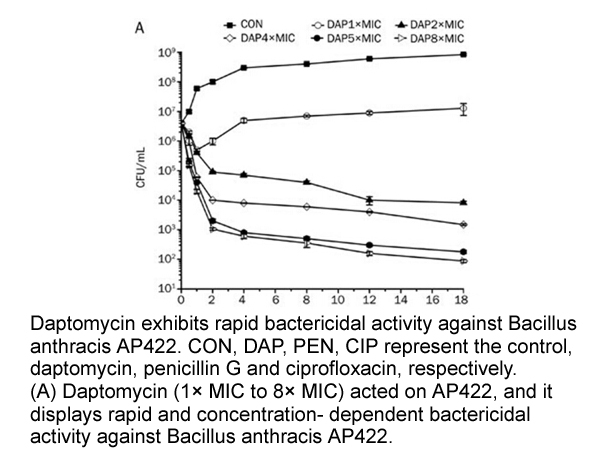
Related Biological Data
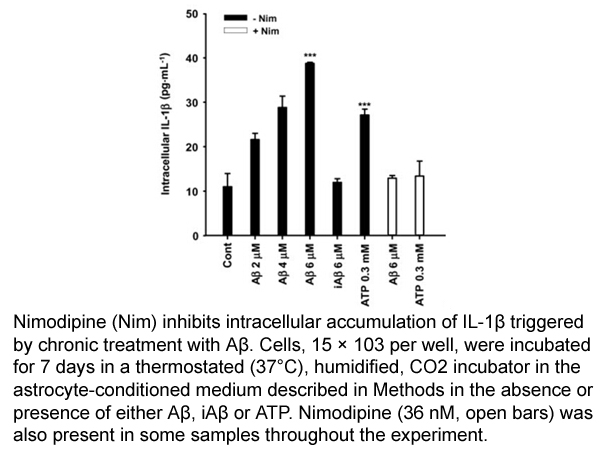
Related Biological Data
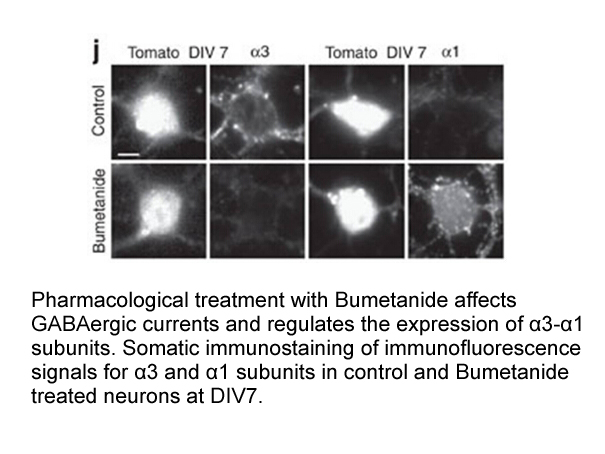
Related Biological Data
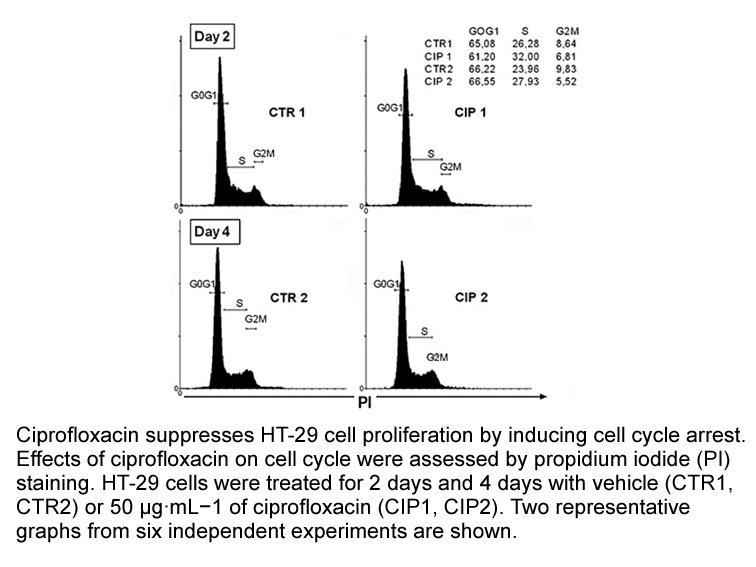
Related Biological Data
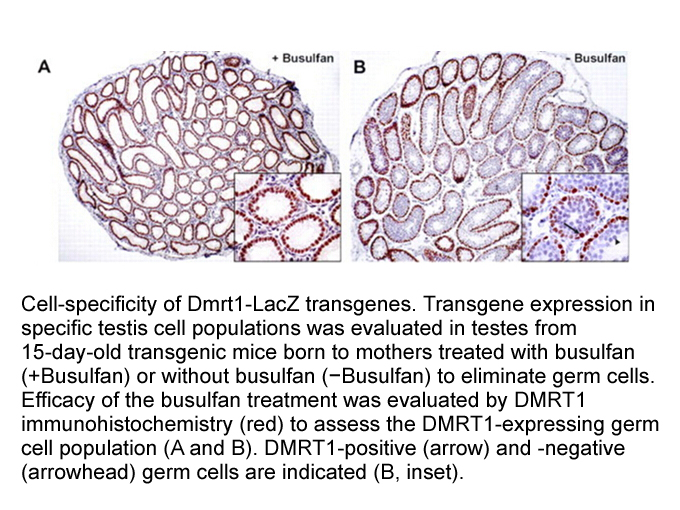
Related Biological Data
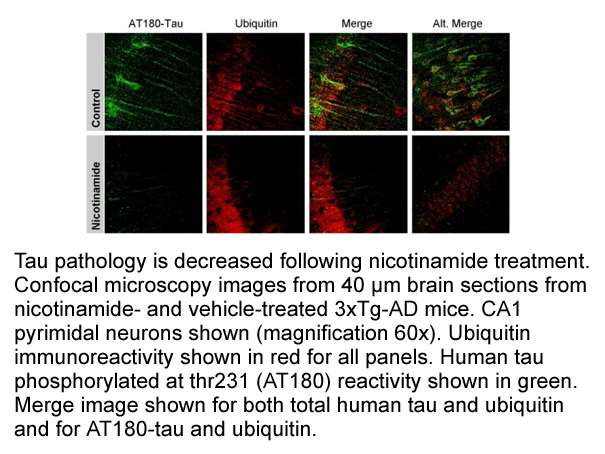
Related Biological Data
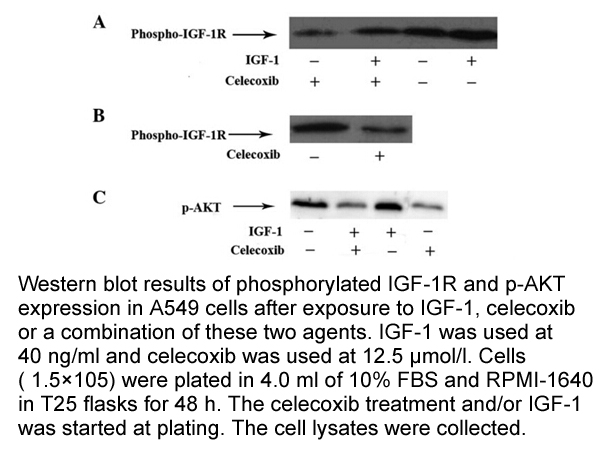
Related Biological Data
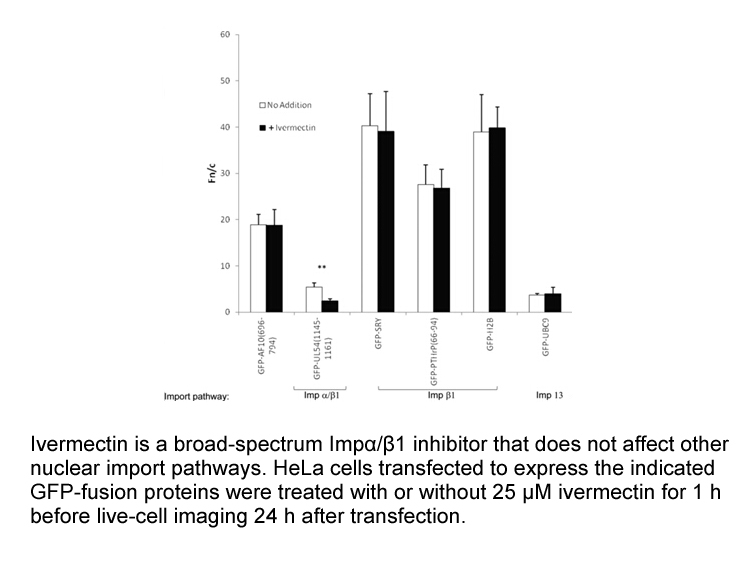
Related Biological Data
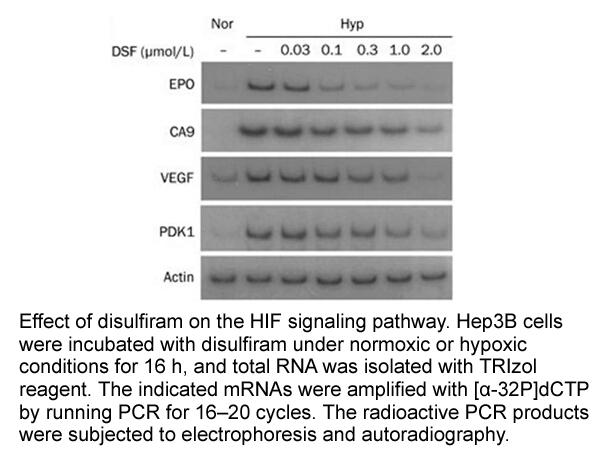
Related Biological Data
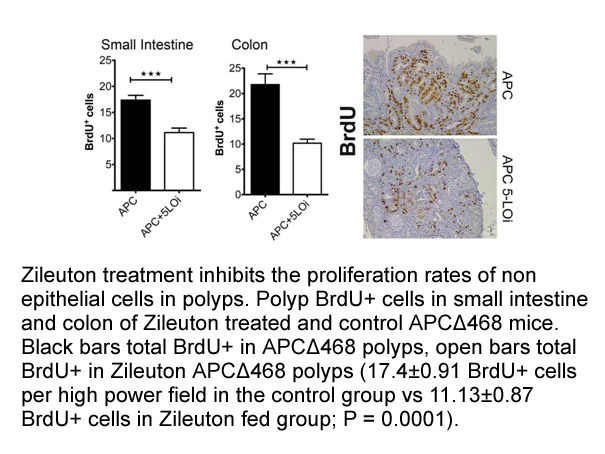
Related Biological Data
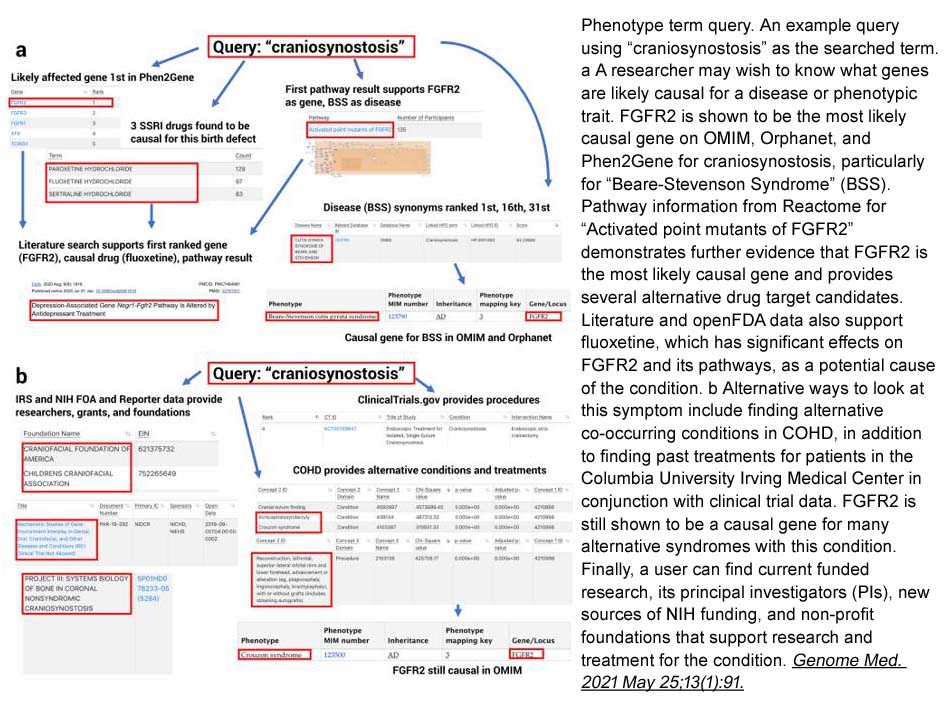
| Form | Pre-dissolved DMSO solutions | Stability | Solution: -20°C for 12 months, -80°C for 24 months |
| Packaging | 96-well Microplate format with peelable foil seal; 96-well DeepWell format with peelable foil seal and EVA cap (100 μL/well, 10 mM DMSO); 96-well rack with Matrix 2D Barcoded ScrewTop Storage tubes (250 μL or 100 μL/well, 10 mM DMSO). |
||
| Shipping Condition | Evaluation sample solution: ship with blue ice All other available size: ship with RT, or blue ice upon request |
||
Abstract
We interrogated a FDA-approved chemicals library for their ability to block infection of human HuH-7 cells by a newly isolated ZIKV strain (ZIKV MEX_I_7). In our in vitro screening assay, more than 20 out of 774 tested compounds reduced ZIKV infection. Then these compounds were further validated for inhibition of ZIKV infection in human neural, cervical and placental stem cell lines, as well as primary human amnion cells. We found that others that had no previously known antiviral activity (e.g., daptomycin) and anti-flaviviral drugs (e.g., bortezomib and mycophenolic acid) were identified as inhibitors of ZIKV infection. There were several drugs that reduced ZIKV infection across multiple cell types, which could be tested in clinical studies of ZIKV infection and provided small molecules to study ZIKV pathogenesis.
Abstract
Mitochondria are a major checkpoint in several pathways leading to neuronal cell death and the mitochondrial permeability transition (mPT) may be critical in stroke-related injury. In order to prove this hypothesis, 1,040 FDA-approved drugs and other bioactive compounds were tested as potential mPT inhibitors. We found that 28 structurally related drugs, including tricyclic antipsychotics and antidepressants, capable of delaying the mPT. Clinically achievable doses of promethazine inhibited mPT and were protective in both in vitro and mouse models of stroke. Also, promethazine protected primary neuronal cultures subjected to oxygen-glucose deprivation and reduced neurological impairment and infarct size in mice subjected to middle cerebral artery occlusion/reperfusion. These results provided a class of safe, tolerable drugs for stroke and neurodegeneration and also provided new tools for understanding mitochondrial roles in neuronal cell death.

